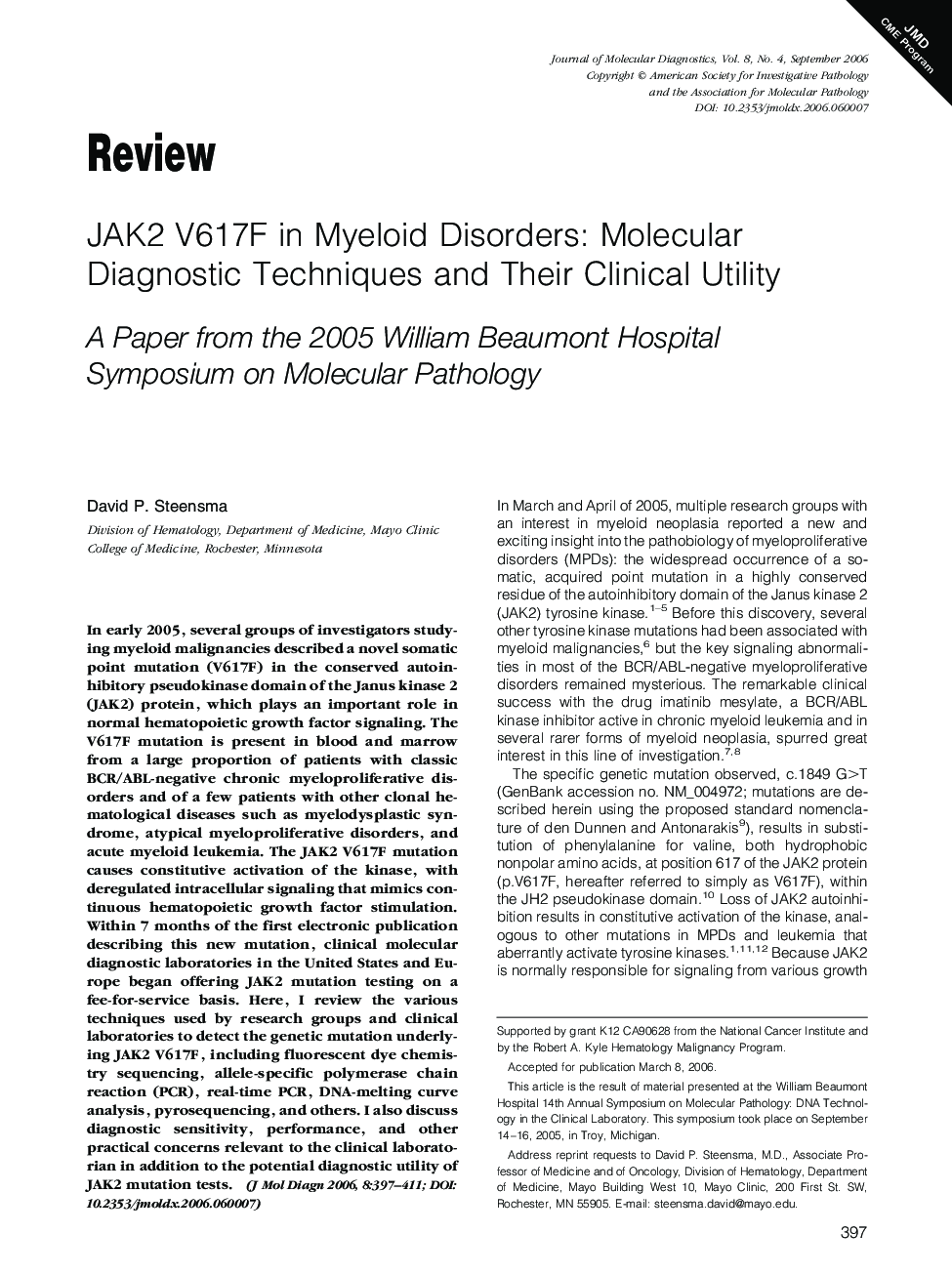| Article ID | Journal | Published Year | Pages | File Type |
|---|---|---|---|---|
| 3327965 | The Journal of Molecular Diagnostics | 2006 | 15 Pages |
In early 2005, several groups of investigators studying myeloid malignancies described a novel somatic point mutation (V617F) in the conserved autoinhibitory pseudokinase domain of the Janus kinase 2 (JAK2) protein, which plays an important role in normal hematopoietic growth factor signaling. The V617F mutation is present in blood and marrow from a large proportion of patients with classic BCR/ABL-negative chronic myeloproliferative disorders and of a few patients with other clonal hematological diseases such as myelodysplastic syndrome, atypical myeloproliferative disorders, and acute myeloid leukemia. The JAK2 V617F mutation causes constitutive activation of the kinase, with deregulated intracellular signaling that mimics continuous hematopoietic growth factor stimulation. Within 7 months of the first electronic publication describing this new mutation, clinical molecular diagnostic laboratories in the United States and Europe began offering JAK2 mutation testing on a fee-for-service basis. Here, I review the various techniques used by research groups and clinical laboratories to detect the genetic mutation underlying JAK2 V617F, including fluorescent dye chemistry sequencing, allele-specific polymerase chain reaction (PCR), real-time PCR, DNA-melting curve analysis, pyrosequencing, and others. I also discuss diagnostic sensitivity, performance, and other practical concerns relevant to the clinical laboratorian in addition to the potential diagnostic utility of JAK2 mutation tests.
